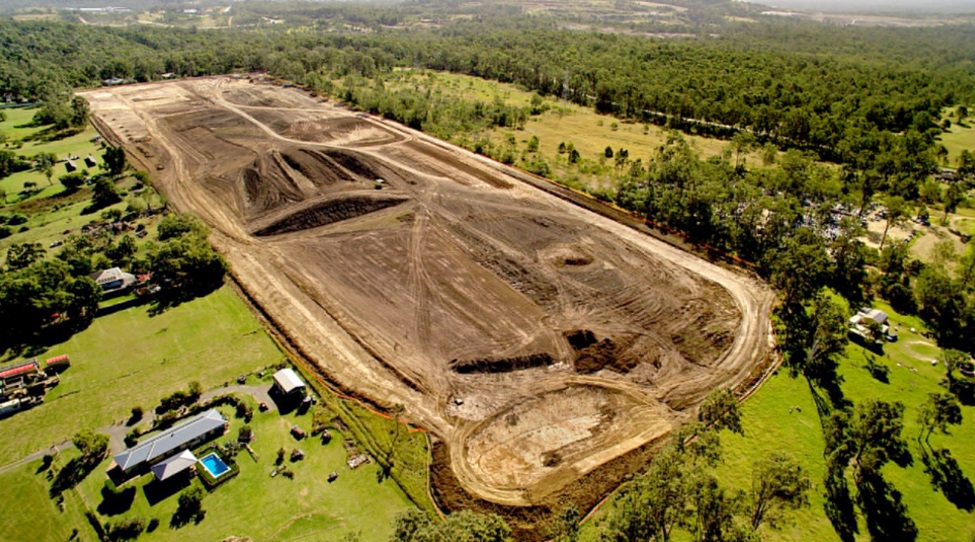
Land Site Development Demystified: Paving the Way for Progress
Land site development is an intricate process that goes beyond the surface, involving a combination of artistry, engineering, and strategic planning. As we delve into the world of land development, we unravel the complexities and unveil the significance of this transformative journey in shaping the landscapes we inhabit.
Understanding Site Development
Defining the Landscape
Land development is the comprehensive process of transforming raw land into a functional, aesthetically pleasing environment. It encompasses various stages, from initial planning and assessment to the implementation of infrastructure, landscaping, and construction. The objective is to create a site that is not only visually appealing but also optimized for its intended purpose.
The Multifaceted Nature of Development
Land development is a multifaceted endeavour that requires collaboration across disciplines. Professionals involved in the process include architects, engineers, surveyors, environmental consultants, and construction experts. Each plays a crucial role in ensuring that the development aligns with regulatory requirements, environmental considerations, and the envisioned purpose of the site.
The Stages of Land Site Development
Preliminary Planning and Assessment
The journey begins with a thorough examination of the land’s characteristics, encompassing topography, soil quality, and existing vegetation. Preliminary planning involves assessing the feasibility of the development and considering factors such as environmental impact, zoning regulations, and accessibility.
Design and Conceptualization
Once the initial assessment is complete, the design phase commences. Architects and designers collaborate to create a conceptual plan that integrates the client’s vision with practical considerations. This phase involves decisions on infrastructure layout, landscaping features, and overall aesthetics.
Regulatory Approvals
Navigating the regulatory landscape is a crucial aspect of site development. Obtaining the necessary approvals from local authorities involves adherence to zoning regulations, environmental impact assessments, and compliance with building codes. Thorough preparation and collaboration with regulatory bodies are essential to move forward with the project.
Infrastructure Development
With approvals in place, the actual construction and infrastructure development phase begins. This stage involves grading, excavation, utility installations, and other groundwork. The goal is to create a stable foundation that aligns with the design plan and supports the envisioned structures.
Landscaping and Environmental Considerations
Land development prioritizes the preservation of natural elements whenever possible. Integrating landscaping features not only enhances the aesthetic appeal but also contributes to environmental sustainability. Careful consideration is given to the preservation of existing vegetation, the creation of green spaces, and the implementation of sustainable landscaping practices.
The Significance of Land Site Development
Economic Impact
Site development has a profound economic impact, contributing to the growth and prosperity of communities. Well-planned developments attract businesses, enhance property values, and create job opportunities. The economic ripple effect extends to various sectors, fostering a positive environment for sustainable growth.
Improved Quality of Life
Thoughtful site development enhances the quality of life for residents and users of the space. Accessible infrastructure, green spaces, and well-designed environments contribute to a sense of community and well-being. Whether it’s a residential neighbourhood, commercial complex, or public space, the impact on daily life is tangible.
Environmental Stewardship
In an era where environmental consciousness is paramount, site development is increasingly adopting sustainable practices. From energy-efficient designs to the incorporation of renewable technologies, developers are embracing eco-friendly approaches to minimize the environmental footprint of developments.
Challenges and Considerations in Land Site Development
Balancing Growth with Preservation
One of the primary challenges in site development is striking a balance between growth and environmental preservation. As urbanization progresses, developers must navigate the delicate task of meeting the demands for development while safeguarding natural resources and ecosystems.
Infrastructure Integration
Ensuring seamless integration of infrastructure is another consideration. From road networks to utility services, a well-developed site requires careful planning to accommodate the needs of residents, businesses, and public spaces.
Community Engagement
Successful site development involves the active engagement of the community. Developers must listen to the needs and concerns of local residents, incorporating their feedback into the planning process. This collaborative approach fosters a sense of ownership and community pride.
The Future of Land Site Development
Smart and Sustainable Solutions
The future of site development lies in embracing smart and sustainable solutions. From the integration of smart technologies to the promotion of green building practices, the industry is evolving to meet the demands of a changing world. Concepts like eco-friendly designs, energy-efficient infrastructure, and sustainable transportation are becoming integral to the development landscape.
Resilient and Adaptable Designs
As climate change introduces new challenges, resilient and adaptable designs are gaining prominence. Site development must account for potential environmental changes, ensuring that structures and landscapes are equipped to withstand and recover from adverse conditions.
Case Studies in Land Site Development
Urban Redevelopment Projects
Urban areas often undergo redevelopment to revitalize aging infrastructure and accommodate growing populations. Site development in urban settings requires careful consideration of existing structures, traffic patterns, and community needs.
Eco-Friendly Residential Developments
Residential developments are increasingly adopting eco-friendly practices. From energy-efficient homes to sustainable landscaping, developers are creating communities that prioritize environmental stewardship and resident well-being.
Conclusion: Shaping Tomorrow’s Landscapes Today
In conclusion, land site development is a dynamic and transformative process that shapes the environments we inhabit. From the initial stages of planning and assessment to the implementation of infrastructure and landscaping, each phase plays a crucial role in creating spaces that contribute to economic growth, community well-being, and environmental sustainability.
As we pave the way for progress through site development, it is essential to embrace innovative and sustainable approaches. The decisions we make today have a lasting impact on the landscapes of tomorrow. By demystifying the complexities of site development and fostering a holistic understanding of its significance, we can collectively contribute to the creation of thriving, resilient, and harmonious communities. Site development is not just about building structures; it’s about crafting a legacy that stands the test of time, shaping tomorrow’s landscapes with foresight, care, and a commitment to progress.

